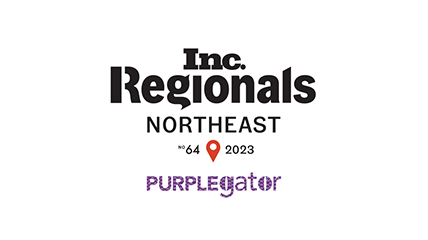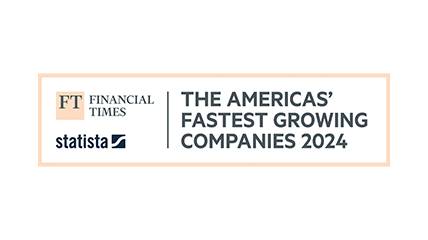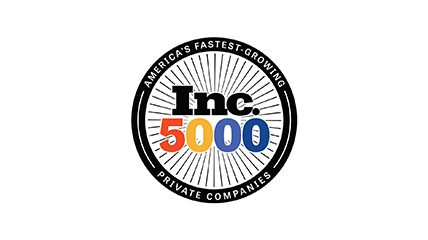Blog /
Conversion Rate Optimization (CRO) for E-commerce

When driving more traffic to increase sales and revenues, it is about actually turning that traffic into customers for e-commerce businesses. CRO plays a major role in helping turn visitors into paying customers. You are leaving money on the table no matter how much traffic you drive to your website if you are not optimizing your conversion rates.
Below, we show how you can enhance your e-commerce CRO using certain proven strategies. We are going to go in-depth on how to understand customer behavior, finetune your website design, and key tactics to help drive up your conversions for sustainable growth.
Importance of CRO for E-commerce Businesses
In other words, Conversion Rate Optimization is not some nicety; it’s a must-have for every growing e-commerce company. CRO basically means the science of enhancing effectiveness through your website by making small but targeted changes to trigger desired actions from the visitor: to make more purchases, to sign up for the newsletter, or to add more items in the cart.
The reason why optimizing a conversion rate helps in the maximization of value from existing traffic is that a well-implemented CRO strategy means even the tiniest increase in conversion rates can significantly improve revenue. For instance, increasing your conversion rate from 2% to 3% can make a huge difference without additional traffic or an additional ad spend. In short, CRO means optimizing the most of what you have already, hence standing out as one of the cheapest solutions for online stores to grow.
What is Conversion Rate Optimization (CRO)?
Conversion Rate Optimization is the process applied to improve the proportion of visitors to an e-commerce website who can complete a desired action. This might be purchasing something, signing up for a service, or filling out a form. It implies that CRO is applied for raising the rates of such conversions, hence leading to increased sales and business success.
Definition and Benefits for E-Commerce Stores
With regard to e-commerce stores, CRO seeks to improve customer experience and eliminate friction points that make it difficult for customers to complete their purchase. This enables companies to make several improvements to their websites to make it a smoother and intuitive shopping experience to promote more actions.
Some of the key benefits of CRO for e-commerce businesses include:
- Increased Sales: By improving conversion rates, e-commerce stores can directly increase revenue without needing to attract more traffic.
- Improved Customer Experience: A well-optimized website is easier to navigate, faster, and more engaging, creating a better experience for users.
- Lower Acquisition Costs: With higher conversion rates, you can get more out of your existing traffic, reducing the need for expensive marketing campaigns to attract new visitors.
- Better Data-Driven Decisions: CRO helps you gather valuable insights into customer behavior, enabling smarter marketing and design decisions.
Key Metrics to Track
The point of effective tracking and analysis is monitoring the right metrics to optimize your e-commerce conversion rate. Supposedly, these KPIs will provide insight into how well your website is performing and where there’s room for improvement. Some key metrics that you should pay more attention to in analysis include:
- Conversion Rate: The percentage of visitors who complete a desired action.
- Average Order Value (AOV): The average amount spent per order. Increasing AOV can have a significant impact on revenue.
- Cart Abandonment Rate: The percentage of customers who add items to their cart but leave before completing the purchase.
- Bounce Rate: The percentage of visitors who leave your site after viewing only one page. A high bounce rate may indicate that your landing pages or site navigation need improvement.
Understanding Your Audience
Understanding the audience is at the heart of CRO. Without knowing what it is that these visitors are trying to find, it can be really difficult to optimize a site for that. Analyzing customer behavior and gathering insights on how users are engaging with your site could tie in better value and present you with new opportunities.
Analyzing Customer Behavior
You will learn about the pattern and the points to improve by studying how users interact with your site. You can track key behaviors, including which pages visitors stay on longest, where they click, and how they navigate through your site with the help of tools such as Google Analytics and heatmaps.
- Heatmaps: Heatmaps visualize where users click, scroll, and hover on your website. This data helps identify which areas of your site are getting the most attention and which parts may be getting overlooked.
- Session Recordings: These allow you to watch real-time recordings of user sessions on your site. You can see exactly how users interact with your website, where they drop off, and where they experience friction.
Using Heatmaps and Session Recordings
The core insights for user behavior study come in the form of heatmaps and session recordings. Heatmaps will show what parts of the page are most interactive for your users so you can structure for optimal user interaction, while session recordings provide direct insights into how users flow through your site and will help pinpoint exactly where a user is encountering issues or frustration.
These tools help in exposing certain problems that could not be obviously seen through raw data. Let’s say there is a great bounce rate-which could mean your landing page isn’t compelling enough-but heat maps can show that visitors aren’t scrolling down your page far enough to catch your CTA.
Gathering Customer Feedback
Complementing the analysis of behavior, collecting feedback directly from the customers is quite crucial. Surveys, reviews, on-site polls-in one word, it can draw valuable insights about what visitors enjoyed and disliked when interacting with something. Customer feedback helps uncover pain points that aren’t immediately obvious from the data.
It will help in building a better picture of what works and what doesn’t on the website, considering both quantitative data-driven insights and qualitative customer feedback. This will, in turn, help drive more informed decisions while implementing CRO strategies for improving user experience and conversion rates.
Identifying Pain Points in the Funnel
Every step that your customer makes in his journey counts, and each phase may be an opportunity to convert or lose a potential buyer. These pain points should be identified within your sales funnel to improve the conversion rate for better sales.
Cart Abandonment Reasons
Cart abandonment is a common issue for e-commerce stores. Customers may fill their carts and even proceed to checkout, only to leave without completing the purchase. The reasons for cart abandonment vary but often include:
- High Shipping Costs: If shipping costs are too high or not revealed early, customers may back out.
- Complicated Checkout Process: A lengthy or confusing checkout process can discourage shoppers from completing their orders.
- Unexpected Costs: Additional fees (e.g., taxes or handling charges) that appear late in the process can cause frustration.
- Limited Payment Options: If customers can’t pay using their preferred method, they’re more likely to abandon the cart.
- Website Errors: Slow load times or errors during checkout can lead to a poor user experience, causing frustration.
Addressing Common Objections
Customers often hesitate to make a purchase due to certain objections they have in mind. Some common objections include:
- Price Concerns: Customers may think the price is too high or not worth the product. Offering clear value propositions or running targeted promotions can address this.
- Uncertainty About Product Quality: Customers may be skeptical about the product’s quality. High-quality images, videos, and customer reviews can help build trust.
- Fear of Commitment: Many customers hesitate because they fear commitment. Offering a money-back guarantee or free trials can help ease their concerns.

Key CRO Strategies for E-commerce
After having identified the pain points, now is the time to implement some strategies to help resolve these and enhance your conversion rate. Below are key strategies that will help in optimizing your e-commerce website.
Simplifying Website Navigation
Your website’s navigation should be as simple and intuitive as possible. If users can’t find what they’re looking for quickly, they’ll likely leave. Here’s how to improve navigation:
- Clear Categories: Organize your products into clear categories and subcategories so users can easily find what they need.
- Sticky Navigation Bar: A fixed navigation bar that stays visible as users scroll can help them navigate your site with ease.
- Search Bar Optimization: Make sure your search bar is easy to find and provides relevant results. Autocomplete features can help users find products faster.
A user-friendly navigation system makes it easier for customers to browse your site, reducing bounce rates and improving conversions.
Optimizing Menus and Search Bars
An optimized menu and search bar can significantly improve the shopping experience. Here’s how to enhance these elements:
- Descriptive Menu Labels: Use simple, descriptive labels that help users quickly understand what each category offers.
- Search Filters: Add filters to your search results so users can refine their search by size, color, price, etc. This improves the shopping experience and saves time.
- Search Suggestions: Include predictive search suggestions that guide users to relevant products as they type.
Ensuring Mobile Responsiveness
More shoppers are using mobile devices to browse and shop. If your website isn’t optimized for mobile, you’re likely losing customers. Here’s how to ensure mobile responsiveness:
- Mobile-Friendly Design: Make sure your website adjusts to different screen sizes. This includes resizing images, rearranging content, and simplifying navigation for small screens.
- Fast Load Times: Mobile users expect fast load times. Compress images and streamline your website to ensure quick page loads.
- Easy Checkout on Mobile: Simplify the checkout process on mobile devices. Autofill forms, reduce steps, and ensure buttons are easy to click on smaller screens.
Enhancing Product Pages
Product pages are where the magic happens. They need to convince customers that they should make a purchase. Here’s how to optimize them:
- High-Quality Images and Videos: Customers want to see what they’re buying. Use high-resolution images, zoom features, and videos that showcase your products from multiple angles.
- Compelling Product Descriptions: Write detailed, persuasive product descriptions that highlight the benefits and features. Use clear, concise language and focus on how the product solves a problem or meets a need.
- Customer Reviews: Positive reviews from previous buyers build trust. Display these reviews prominently on your product pages to show social proof.
Improving Checkout Processes
The check-out process is a critical juncture along every e-commerce road when in view; this is the point that is pretty much the customer’s last battle, so to say, between having a successful complete deal versus quitting. In as much as an overly complex process delays success, streamlining a checkout process does wonders to turn around conversion numbers and lower levels of cart abandonment.
Reducing Steps in the Checkout
Every additional step through the checkout process can deter customers from completing a purchase. The easier and faster the checkout process is, the better. Minimize the number of screens or forms the customer has to go through. Try implementing features like:
- Guest Checkout: Allow customers to check out without needing to create an account. Not everyone wants to commit to an account, especially for a one-time purchase.
- Progress Indicators: Display a clear indicator of how far along customers are in the checkout process to reduce frustration.
- Auto-Fill Fields: Use auto-fill options to save customers time when entering their billing and shipping details.
Offering Multiple Payment Options
Providing more avenues through which a consumer can pay actually helps ensure they’ll see it through. Some want credit cards; others would prefer PayPal or perhaps Apple Pay/Google Pay options on mobile. In offering more choices for someone, one increases the pool of potential conversions.
Firstly, ensure that your payment gateways are secure and popular, using one of the payment methods trusted by customers. Secondly, indicate upfront at the beginning of checkout which methods are acceptable, so that a customer can plan accordingly.
Advanced CRO Techniques
Once you’ve optimized the basics, it’s time to dive into advanced CRO techniques that can significantly impact your e-commerce success.
Personalization Strategies
Personalization plays a major role in enhancing the user experience and increasing conversion rates. By tailoring content, recommendations, and offers to each visitor, you can make them feel more engaged and understood. Some personalization tactics to consider:
- Product Recommendations: Use browsing or purchase history to suggest relevant products that the customer is more likely to be interested in.
- Dynamic Content: Display personalized banners, offers, or promotions based on the customer’s location, past behavior, or preferences.
- Customized Email Campaigns: Send personalized emails with product suggestions, discounts, or reminders based on the customer’s browsing or purchasing history.
A/B Testing and Multivariate Testing
Among the most effective ways of optimizing your site and improving your conversions are tests. An A/B test includes comparing two different versions of a web page to understand which one performed better, while a multivariate test tests different element combinations on a page.
For example, you may want to run two versions of a product page: one with a large image and the other with a carousel of smaller images, to see which generates more sales. Or test your call-to-action text, color, and placement. Do test one at a time, though, to know what impacts your conversions exactly.
By running continuous tests, you can gradually refine your site’s design and functionality, leading to improved performance.
Tools for CRO in E-commerce
To implement and track your CRO efforts effectively, you’ll need the right tools. Several platforms offer detailed analytics, user behavior insights, and testing features to help you optimize your site.
CRO Analytics Tools
- Google Analytics: A must-have for any e-commerce site, Google Analytics provides valuable insights into visitor behavior, traffic sources, and conversion paths. You can track metrics like bounce rate, average session duration, and conversion rates, which help identify problem areas.
- Hotjar: Hotjar is a powerful tool for understanding how users interact with your site through heatmaps and session recordings. It shows you where users are clicking, scrolling, and spending the most time, which helps identify areas for improvement.
- Crazy Egg: Crazy Egg offers heatmaps, scrollmaps, and user recordings to visualize how users engage with your site. It helps you understand which elements are driving interactions and which need adjustments.
These tools help you gather the data needed to make informed decisions about what to optimize for higher conversions.
Tools for Testing and Experimentation
Once you’ve identified areas for improvement, testing becomes essential. Tools like Optimizely and VWO allow you to run A/B and multivariate tests to optimize your website for conversions.
- Optimizely: Known for its user-friendly interface, Optimizely enables easy A/B testing and multivariate testing. It also allows you to segment your audience and test personalized content for different user groups.
- VWO: Visual Website Optimizer (VWO) offers A/B testing, split URL testing, and multivariate testing. It also includes heatmaps, session replays, and funnel analysis to help you understand how users interact with your site and where they drop off.
Measuring the Success of CRO
You can’t tell how well your CRO efforts are working unless you start tracking the right metrics. This is where KPIs need to be defined and followed up on regularly to see how changes influence user experience and conversion rate.
Defining KPIs
To measure success, define key performance indicators (KPIs) that align with your business goals. Common CRO KPIs include:
- Conversion Rate: The percentage of visitors who complete a desired action, like making a purchase.
- Average Order Value (AOV): The average value of each order placed on your site.
- Bounce Rate: The percentage of visitors who leave your site after viewing just one page. A lower bounce rate generally indicates that your site is engaging visitors more effectively.
- Cart Abandonment Rate: The percentage of visitors who add items to their cart but leave without purchasing. Reducing this rate is key to improving conversions.
By setting these KPIs, you can measure the impact of your CRO efforts and refine your strategies accordingly.









